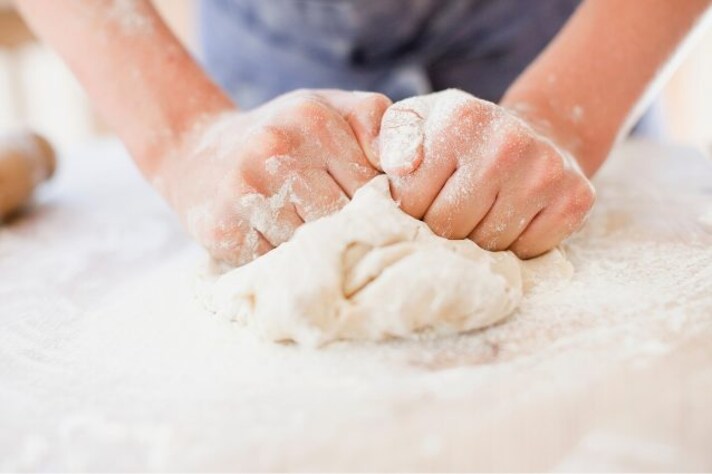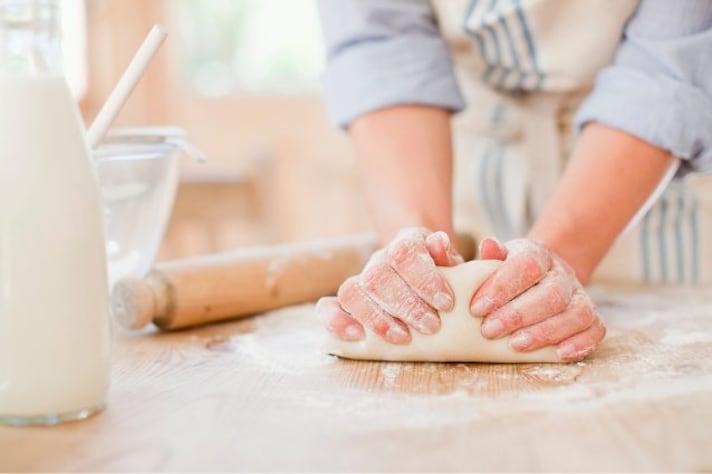Why is The Dough Temperature So Important When We’re Baking Bread (or Anything With Yeast)?
Temperature is crucial in baking as it affects yeast activity, gluten formation, and dough structure. Proper temperature control ensures optimal dough rise and texture. Read ahead to find out the optimal temperatures when baking, either using fresh and dried yeast or sourdough.

Baking bread at home can be a rewarding but often perplexing experience. Despite baking being an exact science that should yield consistent results, the slightest variations can lead to vastly different outcomes. One of the most significant variables is temperature, which plays a crucial role in determining the success of your bread or pastries. But why is temperature so important?
The Importance of Temperature in Dough
Temperature is a fundamental factor in baking because it affects every stage of dough development. The temperature of your dough impacts the activity of the yeast, the formation of gluten, and the dough's overall structure and rise. When dough is at the right temperature, yeast activity is optimized, resulting in the perfect balance of carbon dioxide production and dough expansion. Too cold, and the yeast will be sluggish, leading to a dense, flat loaf. Too warm, and the yeast can become overly active, causing the dough to over-proof and collapse. Hence, maintaining the correct temperature ensures that the dough rises properly and develops the desired texture and flavor.

Yeast, Sourdough and Temperature Variations
When using yeast, whether dry or fresh, temperature control becomes even more critical. Dry yeast generally needs to be activated in warm water, typically around 100°F to 110°F, to wake up the dormant cells. Fresh yeast, being more perishable, thrives best at a slightly cooler temperature. Sourdough, however, introduces another layer of complexity. Since sourdough relies on natural wild yeasts and bacteria, it’s more sensitive to temperature changes. A cooler environment (around 70°F to 75°F) can enhance the flavor by slowing fermentation, allowing the development of complex flavors, while a warmer environment (around 75°F to 80°F) speeds up the process, producing a lighter, airier bread. Depending on the outcome you want to obtain, then, you'll need to adjust the temperature.
Optimal Temperatures for Baking
The journey from dough to delicious bread or pastries involves several temperature-sensitive stages. For mixing and kneading, keeping the dough temperature around 75°F to 78°F ensures optimal yeast activity and gluten development. During proofing, maintaining a warm, stable environment (around 80°F to 85°F) is ideal for yeast fermentation. Baking itself requires a hot oven, usually preheated to 375°F to 475°F, depending on the recipe. This high heat helps the dough rise quickly (oven spring), sets the structure, and creates a beautifully browned crust. Knowing these optimal temperatures can make a world of difference in the final product.

Controlling Dough Temperature
Controlling dough temperature might sound daunting, but with a few tips, it becomes manageable. Start with the ingredients. Use a thermometer to ensure water or milk is at the correct temperature when activating yeast. Adjust the room temperature or find a warm spot for proofing, such as inside an oven with the light on or near a heating pad. If your kitchen is too warm, you can cool the dough by using colder water or chilling the flour. Additionally, investing in a dough thermometer can help you monitor the dough temperature accurately throughout the process. By paying close attention to these details, you can maintain the optimal temperature for dough, leading to consistently great results.
;Resize,width=767;)
;Resize,width=712;)
;Resize,width=712;)

